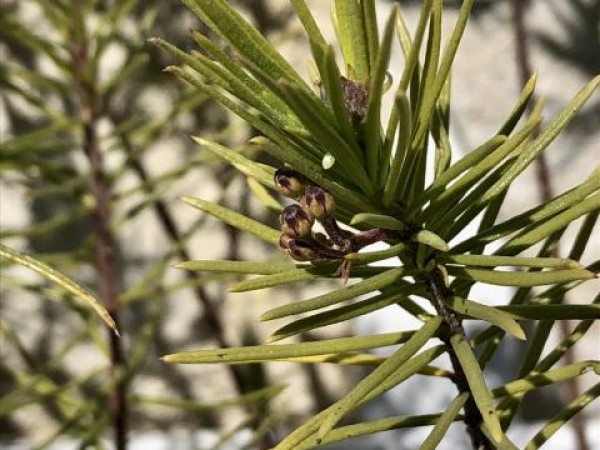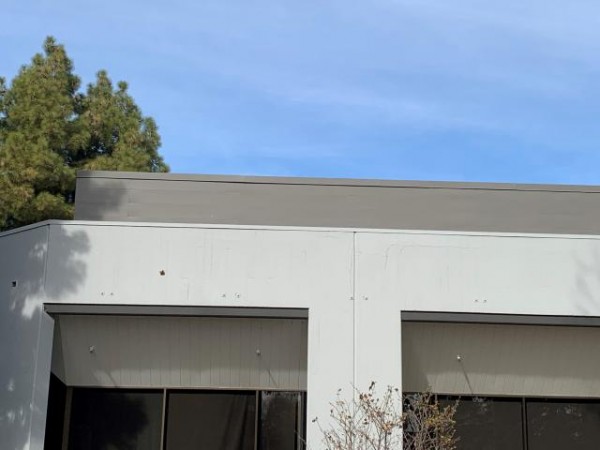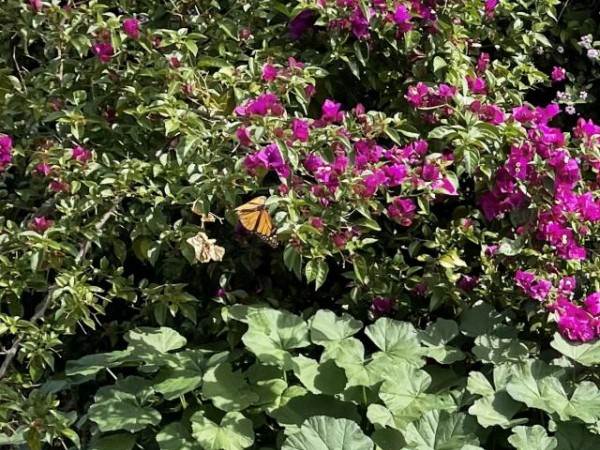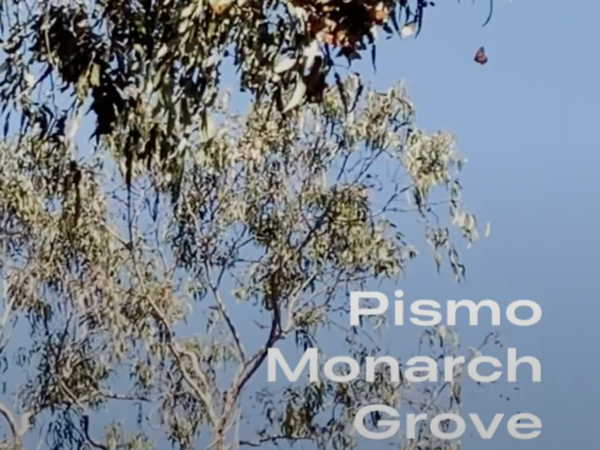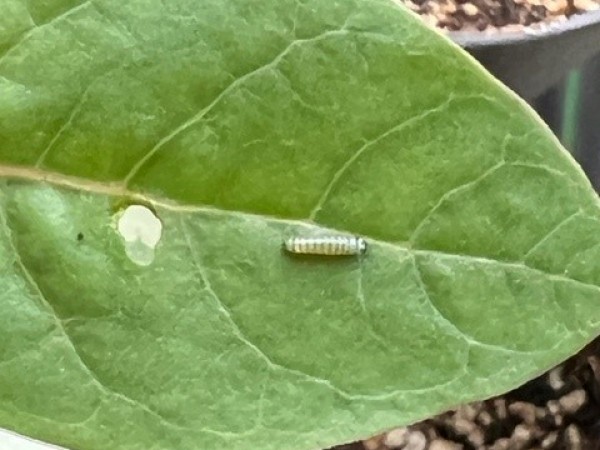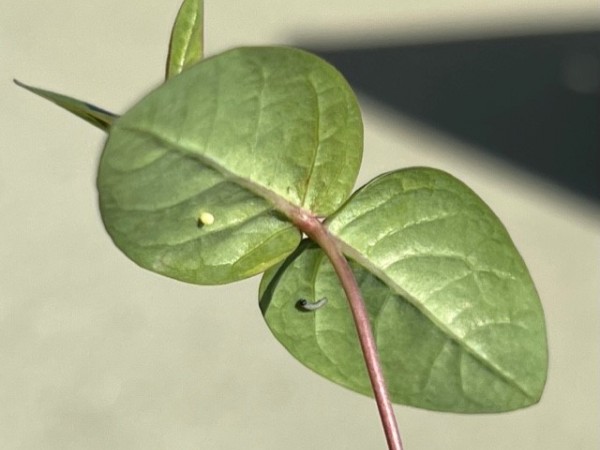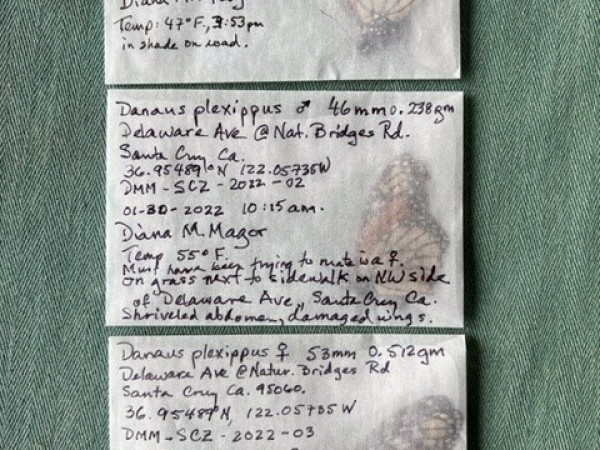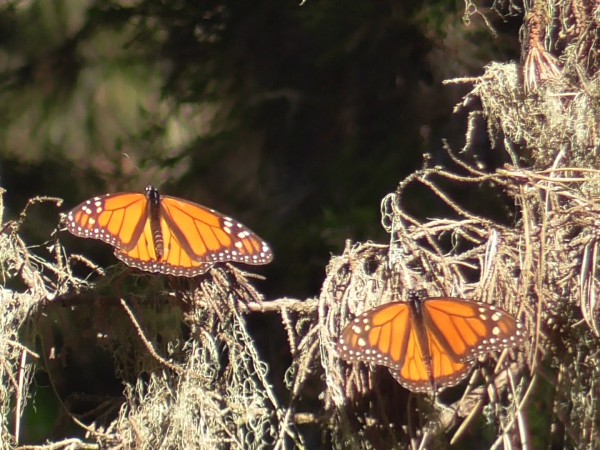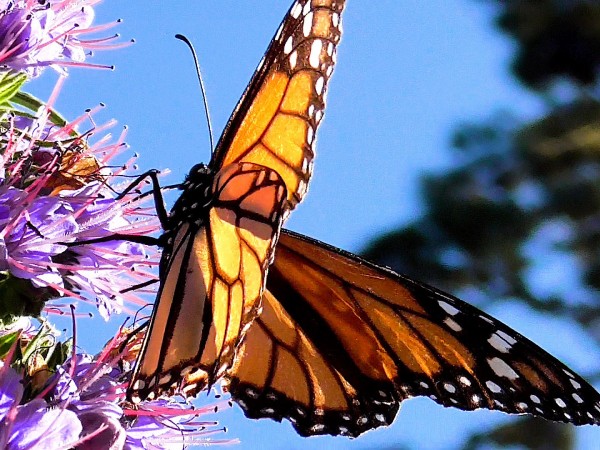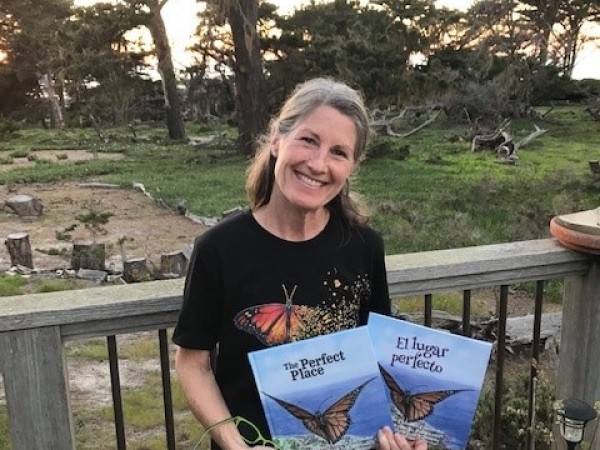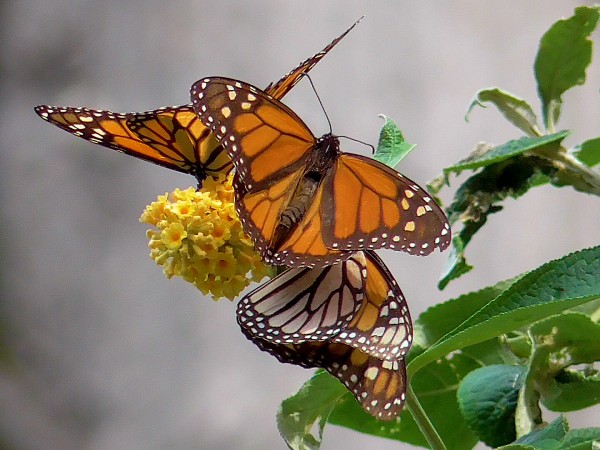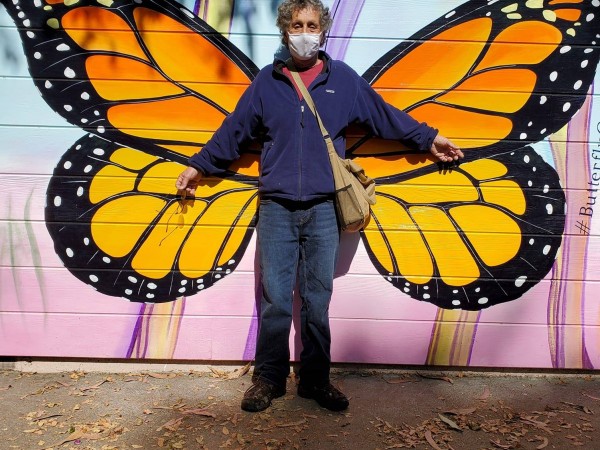Letter from Gail Morris: Western Monarch Winter 2021–22 Report #10
Published: 03/09/2022
Dear Western Monarch Friends,
Few monarchs remain in coastal overwintering sites as monarchs expand their range and search for milkweed in nearby inland foothills. The Spring Migration is now fully in progress with reports of multiple monarchs in milkweed patches and first sightings of monarch eggs and larvae recorded. Keep an eye out for monarchs!
Western Monarch Sightings
A week of first sightings! Lisa spotted her first monarch of the season in San Leandro, California on March 1. “Solo Monarch flying around in our backyard. Did not stop anywhere before leaving.” The next day, Alexandra in Berkley, California, also found her first monarch. “Flying over house near cherry trees.” The same day, Vicky in Santa Margarita, California, also saw her first monarch. “One healthy adult monarch.”
Jamie in Santee, California, saw eggs on her milkweed for the first time this season on February 26. “I can’t believe I counted 17 eggs in the end of February. All in my backyard. I even saw the female laying her eggs. So excited.”
On February 27, Joyce in Mountainview, California, saw 31 monarchs! “Amazed to see 31 Monarchs today at Google. All were flying abut in the warm sun, mostly alone but a few in pairs. It was 69 degrees and calm.”
On March 2, Lisa in San Leandro, California, reported one monarch. “solo Monarch (maybe the same one seen yesterday) nectering [sic] on plum tree flowers.”
Effie in Pismo Beach, California, saw one monarch on March 3. “One large mature Monarch, flitting around. Our house, then crossed the street to another house, then continued on out of sight, to the SE.”
On March 4, Donald in Rancho Palos Verdes reported two monarchs. “Common to observe Monarchs in this area heading eastward.”
Notes from the California Overwintering Sites
Pismo Beach
Marylou Barker Gooden reflects on the season at the Monarch Grove at Pismo Beach. “Less than 50 (monarchs) left in the grove now. Our season is officially over. Very quiet after a lovely season.”
Pacific Grove
Stephanie Turcotte shares an update about the monarchs at the Butterfly Grove in Pacific Grove.
"The monarchs haven’t quite ALL left for season. We had a very active week in and around Pacific Grove, inside and outside the grove. Our weather has been super erratic. We had some rain and fog yesterday, and now heavy wind. We aren’t going to be able to count this week. However, I imagine that we’ll count one more time next week- just to see and close out the season."
"The Monterey Peninsula, including Pacific Grove, is subject to the unpredictability of the weather due, often times, to a changing climate. The monarchs that remain here continue to have to navigate those fluctuations in temperature and weather patterns. How many succeed in doing so, will feed into the subsequent gene pool and influence the possible numbers we will have Fall 2022."
Santa Cruz
Last week Diana Magor was surprised to find a monarch egg on Heartleaf Milkweed, Asclepias cordifolia, she was growing for restoration. So, what did she see this week? “Yep, the little guy hatched on March 2 and has started to eat his birth leaf! He was joined by another egg on Feb 28, but moved over to another leaf, then back to the original one. Still have a few monarchs visiting my gardens in Santa Cruz and in town, and ovipositing wherever they can find a milkweed plant. My A. fascicularis (Narrowleaf) in pots is coming up and other people in the Bay Area and Sierras are reporting it emerging as well."
Diana has been volunteering to help with the plant materials group in California and plans to start more heartleaf milkweeds soon. She will be attending an upcoming meeting with Hillary Sardinas who will be presenting an update on early milkweeds emerging, including progress and projects in the state. "Hillary found several Cal milkweeds A. californica with 13 eggs and a female nearby at Mt Diablo S. of the East Bay cities last week. My friends in the Sierra foothills and Sacramento Valley are finding californica sprouting in several spots. Southern California searchers are finally spotting a few as well. Haven’t found any sightings of Heartleaf emerging in the wild yet, but expect to soon."
Not all monarchs survive the winter season after their long journey to the overwintering sites but there is an opportunity to learn more about their journey none-the-less. As part of a project to learn more about the origin of California overwintering monarchs, Diana also collected deceased monarchs this winter at approved sites. “Here is a photo of some of the deceased monarchs I have gathered for the Monarch genome study, being conducted by Chris Funk at Colorado State University in cooperation with Cal Dept. Fish & Wildlife (CDFW) to examine any genetic differences between various CA overwintering sites.” Be sure to see her photo samples about this project – so many opportunities for Community Scientists to participate in learning more about monarchs!
Thanks!
A special Thank You to Marylou Gooden, Stephanie Turcotte, Diana Magor and Robert Pacelli, for their expanded reports and photographs as well as everyone who submitted sightings and photos this week.
Spring Migration Sightings Are Important!
Where are monarchs now? If you are seeing monarchs, be sure to report to Journey North whether they are adults or eggs or larvae. Provide as much information as you can such as weather conditions (it’s okay to estimate). Your detailed description of what you see can include, but is not limited to, the monarch’s gender and activity and, if known, the type of flowers if they are nectaring. If you can, observe the condition of the wings – are they fresh and new or worn and tattered or something in between – helps us learn more about monarch age and survival. We realize it isn’t always possible, but please take a photo if you can. Thanks so much for your help.
Gail Morris is the Coordinator of the Southwest Monarch Study (www.swmonarchs.org), a Monarch Watch Conservation Specialist, and the Vice President of the Monarch Butterfly Fund, the Central Arizona Butterfly Association and the Western Monarch Advocates. The Western Monarch Population News is based on comments provided to Gail Morris. We hope to increase the number of sightings and therefore photos and comments entered into Journey North. We rely on the volunteers who communicate regularly with Gail and who agree to participate in our effort to increase awareness of the population of western Monarchs. You can reach her at gail@swmonarchs.org

